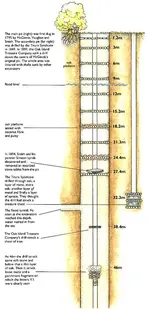Same for you, you have no idea what I am about!
Nor do I care.
Now let us review
There is NO collaborating evidence outside of Brother Jean de Chalons that confirm that:
"he himself met Brother de Villers leading 50 horses
That 18 galleys set out to sea as "he heard it said"- NO direct knowledge
La Rochelle nor any other Templar port is mention for these alleged 18 galleys
Brother Hugues de Chalons "fled with the whole treasure of Brother Hugues de Pairaud"
One is expected to believe that no one in the French countryside saw a Templar Knight lead 50 horses or port workers noticing the loading of 18 galleys and their departure?
So all of the above as being true is highly suspect.
Now lets discuss coconut coir that some came is proof that the Templars visited Oak Island to get away from the King of France and the Pope.
Coconut Coir was used for ship riggings and rope since the 11th century, sometimes combined with hemp, up until recent times. One can buy coir door mats and other coir products from Amazon , even Walmart.
The Templars did not then or ever have an exclusivity on coconut coir.
If one actually takes the time to research the galleys of the Templar period, it would become obvious with their flat bottoms and low to the water gunwales, there is NO way they could survive an Atlantic crossing.
Then there is the mention of Templar treasure buried at the pit on Oak Island.
What was this treasure that had to be hidden across the Atlantic from France? Brother Hugues de Pairaud stolen whole treasure?
There are more holes in these Templar tales then those caused by Oak Island treasure hunters.




